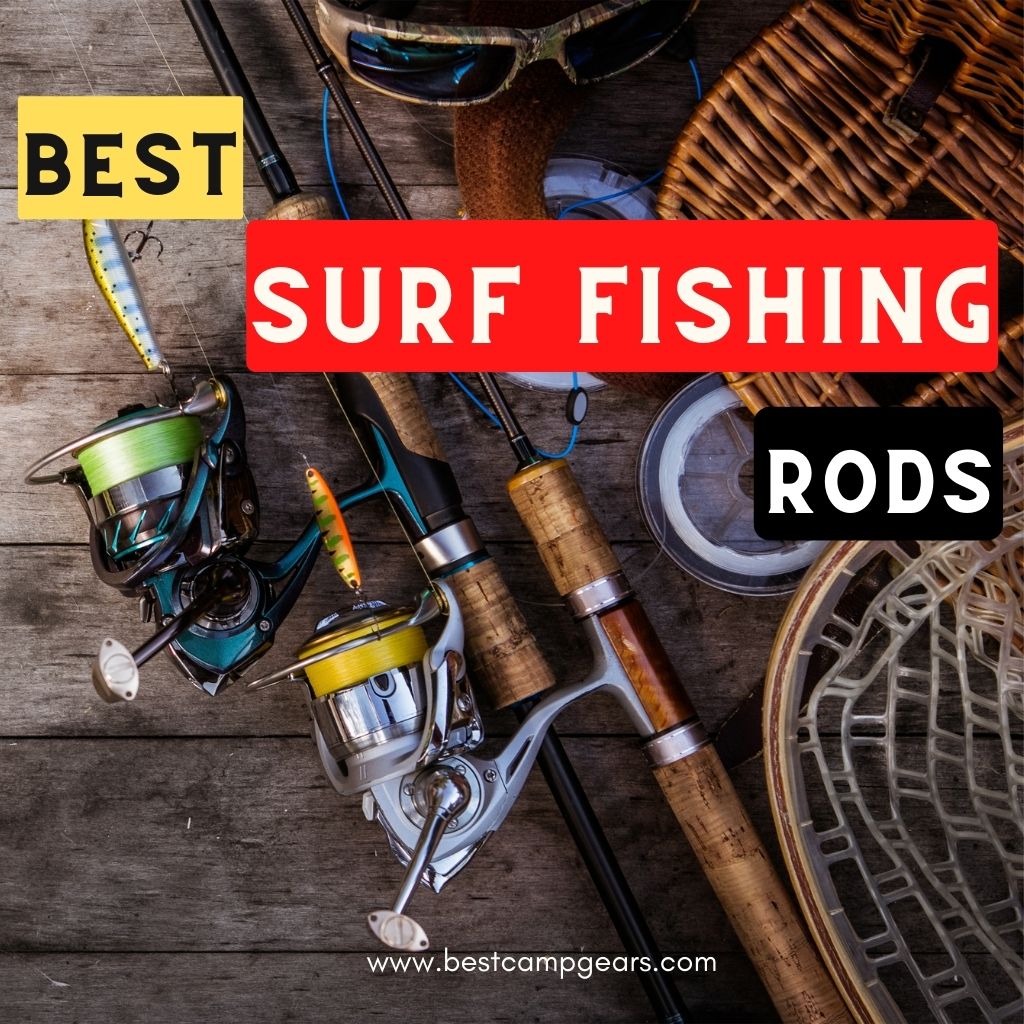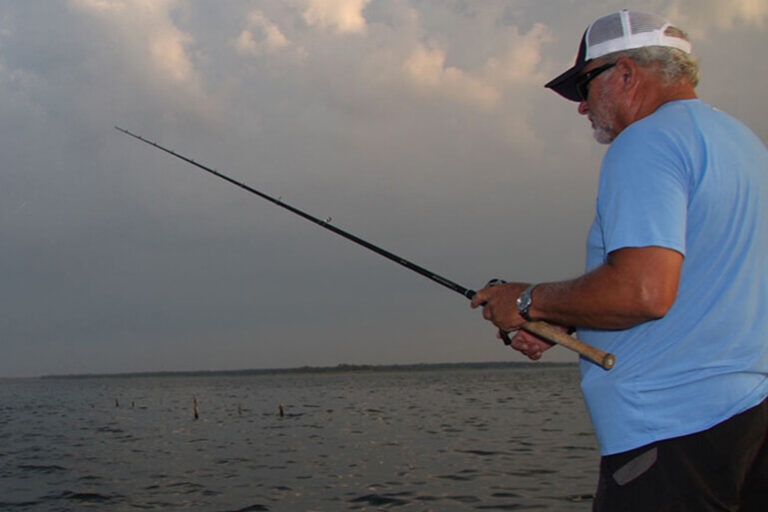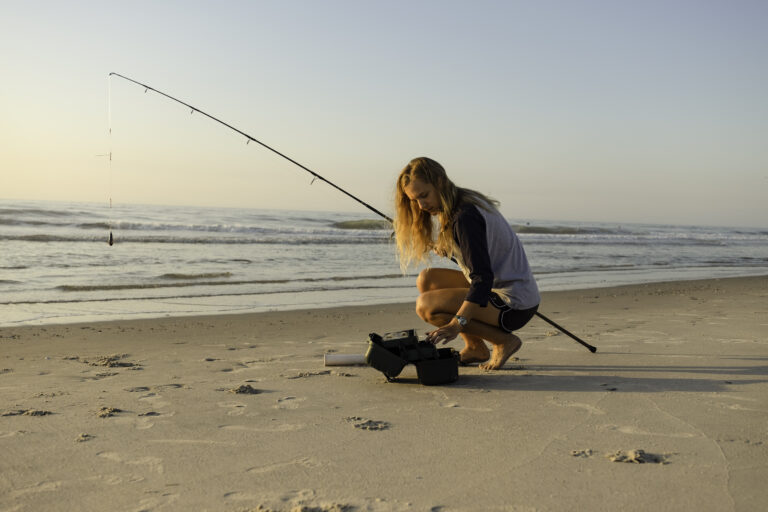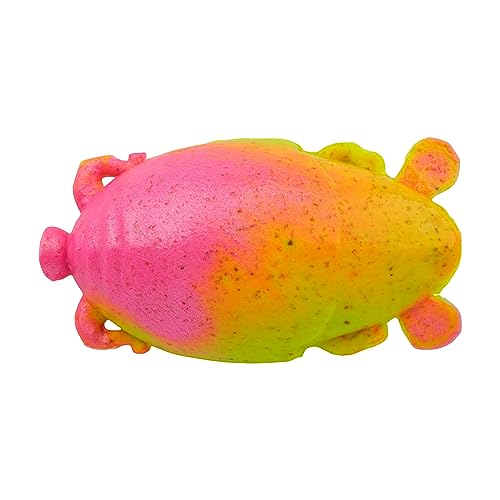For surf fishing, the best line to use depends on the conditions and target species. Choose a braided line for strength and sensitivity, with a test rating of 20-30 pounds for general surf fishing.
Surf fishing is a thrilling and popular form of angling that requires specialized gear and techniques. One crucial factor to consider when prepping for a surf fishing adventure is the line to use. The choice of line can significantly impact your success in landing fish and handling the challenging surf conditions.
In order to make the right decision, it is essential to take into account various factors, such as the conditions of the surf, the target species, and the overall strength and sensitivity required. This article will provide insights into selecting the most suitable line for surf fishing, ensuring an enjoyable and fruitful fishing experience.

Credit: bestcampgears.com
Understanding The Importance Of The Right Line
Factors To Consider When Selecting A Fishing Line For Surf Fishing
When it comes to surf fishing, choosing the right fishing line is crucial. From bait presentation to casting distance, the type of line you use plays a significant role in your overall success. Here are some factors to consider when selecting a fishing line for surf fishing:
- Line strength: The strength of the fishing line is important as it determines the amount of weight it can handle. For surf fishing, a line with a higher pound test strength is recommended to withstand the powerful currents and large fish commonly found in the surf.
- Abrasion resistance: Surf fishing often involves rocky shores and rough conditions, leading to frequent contact with debris and structures. Choosing a line with good abrasion resistance will minimize the chances of it getting damaged and breaking.
- Visibility: Opting for a low visibility fishing line is essential, especially when targeting wary fish species. Clear or low-visibility lines are less likely to spook fish, increasing your chances of a successful catch.
- Stretch: Consider the level of stretch in the fishing line. A line with a higher stretch can help absorb the shock of a fish’s sudden movements, decreasing the likelihood of the line breaking.
- Castability: The ability of the line to cast smoothly and effortlessly is vital for surf fishing. Look for lines that have good casting capabilities, allowing you to reach greater distances and cover more water.
Analyzing The Impact Of Line Choice On Bait Presentation And Casting Distance
The choice of fishing line can have a significant impact on both bait presentation and casting distance when surf fishing. Here’s why:
- Bait presentation: The line you use directly affects how your bait or lure behaves in the water. A thinner line provides less resistance and allows your bait to move more naturally, increasing its attractiveness to fish. Additionally, a low visibility line reduces the chances of fish detecting the line and becoming cautious.
- Casting distance: The right fishing line can enhance your casting distance, allowing you to reach areas that are farther offshore. Thinner lines are generally more aerodynamic, reducing friction in the air and enabling longer, smoother casts. This gives you access to a wider range of fishing grounds and increases your chances of locating fish.
How The Right Line Can Enhance Your Fishing Experience And Increase Your Chances Of Success
Choosing the right fishing line for surf fishing is not just about convenience; it can significantly impact your overall fishing experience and success rate. Here’s how the right line can make a difference:
- Improved confidence: With a suitable fishing line, you can have confidence in its strength and reliability, enabling you to tackle larger fish and challenging conditions with peace of mind.
- Better sensitivity: A high-quality line allows you to feel even the slightest nibbles and bites, providing better sensitivity and increasing your chances of detecting fish activity.
- Increased hook-up ratio: The right line can offer improved hook-setting capabilities, ensuring a secure connection with the fish when it strikes. This leads to a higher hook-up ratio and more successful catches.
- Longevity: Investing in a quality fishing line means it will last longer, saving you money in the long run. A durable line with good resistance to abrasion and uv rays will withstand the harsh conditions of surf fishing.
Choosing the right fishing line for surf fishing is essential for bait presentation, casting distance, and overall fishing success. Factors such as line strength, abrasion resistance, visibility, stretch, and castability should be considered to enhance your fishing experience and increase your chances of landing that prized catch.
Exploring Different Types Of Fishing Lines
When it comes to surf fishing, choosing the right fishing line is crucial. Different types of fishing lines offer varying strengths, durability, and visibility underwater. In this section, we will explore three popular options for surf fishing lines: monofilament, braided, and fluorocarbon.
Each type has its own advantages and considerations, which we will dive into below.
Monofilament: Pros And Cons Of Using Monofilament Lines For Surf Fishing
Monofilament lines are a popular choice among surf anglers for their versatility and affordability. Here are the key points to consider:
- Versatility: Monofilament lines are suitable for a wide range of fishing conditions, making them a reliable choice for surf fishing. Whether you’re targeting small or large fish, monofilament lines can handle the job.
- Stretchability: Monofilament lines have a certain amount of stretch, which can be advantageous when landing larger fish. The stretch acts as a shock absorber, reducing the chances of your line breaking under pressure.
- Visibility: One drawback of monofilament lines is their high visibility in the water. If the fish are particularly wary or fishing conditions are clear, the visibility of the line may impact your chances of a successful catch.
Braided: Benefits And Drawbacks Of Using Braided Lines In The Surf
Braided lines have gained popularity among surf fishermen due to their exceptional strength and sensitivity. Here are the key points to consider:
- Strength: Braided lines are incredibly strong, allowing you to handle larger fish and withstand rough surf conditions. With a high tensile strength, these lines provide the confidence needed for challenging surf fishing situations.
- Sensitivity: The thin diameter of braided lines enhances sensitivity, allowing you to detect even the slightest nibbles or bites. This increased sensitivity can greatly improve your chances of hooking a fish.
- Lack of stretch: Unlike monofilament lines, braided lines have minimal stretch. While this lack of stretch provides excellent sensitivity, it can also increase the chances of your line breaking if you’re not careful.
Fluorocarbon: Understanding When And Why To Choose Fluorocarbon Lines For Surf Fishing
Fluorocarbon lines are known for their invisibility underwater, making them an attractive choice for surf fishing. Here are the key points to consider:
- Invisibility: Fluorocarbon lines have a refractive index similar to that of water, making them nearly invisible underwater. This stealthy quality can make a significant difference when targeting finicky or pressured fish in clear water.
- Abrasion resistance: Fluorocarbon lines offer excellent resistance to abrasion, making them suitable for fishing around rough terrain or structures commonly found in the surf. You can cast with confidence, knowing that your line can handle the elements.
- Stiffness: One consideration with fluorocarbon lines is their stiffness, which can affect casting distance and line manageability. It is important to select a fluorocarbon line that balances stiffness with ease of use.
As you explore each type of fishing line, keep in mind your fishing conditions, target species, and personal preferences. Each line type has its strengths and considerations, so make an informed choice to maximize your chances of a successful surf fishing experience.
Selecting The Right Line For Different Surf Fishing Scenarios
Calm Conditions: Recommended Lines For Surf Fishing On Calm Days
Surf fishing on calm days presents a unique opportunity for anglers to maximize their chances of a great catch. In these tranquil conditions, it’s crucial to select the right fishing line that will allow for optimal control and sensitivity while remaining inconspicuous in the clear water.
Consider the following recommendations when choosing a fishing line for calm surf fishing:
- Monofilament: Known for its versatility and affordability, monofilament lines are a popular choice for calm conditions. They offer excellent knot strength and can withstand the occasional abrasion caused by underwater structures. Opt for a light to medium monofilament line with a pound test suitable for the targeted fish species.
- Fluorocarbon: With its incredible invisibility underwater, fluorocarbon lines are an excellent option when dealing with finicky fish in calm surf conditions. Their near-invisible nature and refractive index similar to water make them almost undetectable to fish. Additionally, fluorocarbon lines have excellent abrasion resistance and low stretch, enhancing sensitivity and hook-setting power.
- Braided line: Offering superior strength, thin diameter, and minimal stretch, braided lines are another viable choice for calm surf fishing. They provide exceptional sensitivity, allowing anglers to detect even the subtlest bites. However, their high visibility can be a drawback in clear water, so opt for braided lines with a color that blends well with the surroundings.
Rough surf: choosing the right line to tackle rough and turbulent waters
Tackling rough and turbulent surf conditions requires a fishing line that can withstand the powerful forces of the crashing waves. Here are some recommendations for selecting the right line to tackle rough surf:
- Braided line: When facing rough surf, braided lines excel due to their exceptional strength and abrasion resistance. With a high strength-to-diameter ratio, braided lines allow anglers to use heavier pound tests without sacrificing sensitivity. Their minimal stretch and increased line capacity also come in handy when casting long distances or battling strong currents.
- Monofilament: While monofilament lines may not have the same strength as braided lines, they offer good shock resistance and can handle the rough surf conditions. Choose a higher pound test to compensate for the increased resistance caused by the rough water. Additionally, monofilament lines have more natural buoyancy, making them less likely to get swept away by strong currents.
- Heavy-duty fluorocarbon: For anglers targeting larger species in rough surf, heavy-duty fluorocarbon lines provide an excellent combination of strength and invisibility. These lines offer superior abrasion resistance and can handle the intense pressure of battling big fish in turbulent waters.
Deep-sea surf: exploring the line options for surf fishing in deeper waters
When venturing into deeper waters for surf fishing, selecting the right line is crucial to withstand the increased depth and potential challenges. Consider the following line options for deep-sea surf fishing:
- Braided line: Due to its strength and thin diameter, braided line is an ideal choice for deep-sea surf fishing. It allows for more line capacity on the reel, enabling anglers to reach greater depths. Braided lines also provide excellent sensitivity, crucial for detecting subtle nibbles from deep-water fish species.
- Heavy monofilament: Another suitable option for deep-sea surf fishing is heavy monofilament line. Opt for a higher pound test to handle the increased pressure and potential encounters with larger fish. The stretch in monofilament lines can also help absorb the shock when fighting fish at greater depths.
- Multi-purpose hybrid lines: Some anglers opt for hybrid lines that combine the best attributes of monofilament and braided lines. These lines offer the strength and low stretch of braided lines, combined with the shock absorption of monofilament. Hybrid lines are designed to handle the challenges of deep-sea fishing while maintaining good knot strength and sensitivity.
Remember, the right choice of fishing line can greatly impact your surf fishing experience. Consider the specific surf conditions, target species, and your fishing style before making a decision. Experimenting with different lines and adapting to the changing surf conditions will ultimately lead to success in the world of surf fishing.
So go out there, cast your line, and enjoy the thrill of reeling in your next big catch.
Factors To Consider When Choosing A Surf Fishing Line
Surf fishing requires the right equipment to ensure a successful and enjoyable experience. One crucial element to consider is the fishing line. The line you choose can make a significant difference in your fishing performance, from the strength to the sensitivity.
Let’s explore the key factors to consider when making your decision.
Line Strength: Understanding The Correlations Between Line Strength And Target Fish Species
When selecting a surf fishing line, understanding the correlation between line strength and target fish species is crucial. Here are some key points to consider:
- Different fish species have varying strength requirements. It’s essential to choose a line that matches the targeted species’ size and fighting power.
- The line strength is typically measured in pounds. A general rule of thumb is to select a line with a breaking strength of at least four times the average weight of the targeted fish species.
- Keep in mind that heavier lines may limit your casting distance, so it’s essential to find the right balance between strength and casting ability.
Abrasion Resistance: Evaluating The Line’S Ability To Withstand Rugged Surf Environments
Surf fishing involves casting your line into rough and abrasive surf environments. To ensure longevity and durability, consider the line’s abrasion resistance. Here are some key points to remember:
- Check for lines specifically designed for surf fishing with enhanced abrasion resistance. These lines have a protective coating or a higher density that enables them to withstand rough conditions.
- Look for lines made from durable materials like braided or fused lines, as these are less prone to fraying or breaking under constant contact with rocks, shells, and other abrasive elements.
- Remember to check the line regularly for signs of wear and replace it if necessary to prevent any unexpected breakages during your fishing endeavors.
Sensitivity: How A Sensitive Line Can Improve Bite Detection And Hook Sets
Surf fishing requires precise bite detection and quick hook sets to increase your chances of landing that trophy fish. Choosing a sensitive line can greatly enhance these aspects. Consider the following points:
- A sensitive line enables you to feel even the slightest nibble, allowing you to react swiftly and effectively.
- Opt for lines made from materials such as fluorocarbon or braided lines, as they provide excellent sensitivity due to their low stretch properties.
- Keep in mind that a sensitive line may be more expensive than traditional monofilament lines, but the improved bite detection and increased hook sets are well worth the investment.
When selecting a surf fishing line, consider the line strength, abrasion resistance, and sensitivity. Understanding the correlations between these factors and the target fish species will help you make an informed decision that enhances your fishing experience. So, gear up with the right line and get ready to reel in the big catches with confidence!
Tips For Maintaining And Caring For Your Fishing Line
Proper storage techniques to maximize the lifespan of your surf fishing line:
- Store your fishing line in a cool, dry place away from direct sunlight, as uv rays can weaken the line over time.
- Avoid storing your line near any heat sources, as excessive heat can cause the line to deteriorate.
- Use a line spooler or a similar device to keep your line neat and tangle-free.
- Consider using line conditioner or a similar product to help prevent the line from drying out and becoming brittle.
Regular cleaning and inspection to prevent damage and maintain optimal performance:
- After each fishing trip, wipe down your line with a clean cloth to remove any dirt or debris.
- Inspect the line for any frays, nicks, or abrasions that could weaken the line or cause it to break.
- If you do find any damage, consider trimming or replacing the affected section to maintain the overall integrity of the line.
- Regularly check your fishing reel for any signs of wear and tear, as a faulty reel can put unnecessary stress on the line.
Importance of replacing your line periodically to ensure consistent results:
- Over time, fishing line can become worn out and lose its strength and reliability.
- It is recommended to replace your fishing line at least once a season or more frequently if you fish often.
- By replacing your line regularly, you can ensure that you have a strong and durable line that can withstand the rigors of surf fishing.
- A fresh line will also provide better casting performance and sensitivity to detect even the slightest of bites.
Remember, caring for your fishing line is crucial for a successful surf fishing experience. Proper storage, regular cleaning and inspection, as well as periodic line replacement, will help maximize the lifespan of your line and ensure consistent results every time you head out to the surf.
Bonus Tips And Tricks For Surf Fishing Success
Surf fishing is an exciting and challenging sport that requires the right equipment and techniques for success. While choosing the right fishing rod and reel is essential, the line you use can also significantly impact your fishing experience. In this section, we will discuss some bonus tips and tricks for surf fishing success, including adding shock leaders for increased casting distance and durability, utilizing backing lines to increase line capacity and reduce costs, and understanding the importance of correct knot tying techniques.
Adding Shock Leaders For Increased Casting Distance And Durability:
- Shock leaders are thicker and more durable lines connected to the main fishing line near the bait or lure.
- They help increase casting distance by providing weight and momentum to the cast.
- Shock leaders also protect the main line from damage caused by the friction of the line rubbing against the sandy bottom or sharp rocks.
- To add a shock leader, tie a strong, reliable knot, such as the improved albright knot or the double uni knot, to secure the two lines together.
Utilizing Backing Lines To Increase Line Capacity And Reduce Costs:
- Backing lines are thin, cheaper lines that are spooled onto the reel before attaching the main fishing line.
- By using backing lines, you can increase the line capacity of your reel, allowing for longer casts and deeper retrieves.
- Backing lines also reduce the amount of expensive main line needed, saving you money in the long run.
- When spooling the backing line, make sure to secure it tightly onto the reel to prevent any slipping or tangling.
Understanding The Importance Of Correct Knot Tying Techniques:
- Knot tying is a fundamental skill in surf fishing that ensures your hook, bait, and lure stay securely attached to the line.
- Using the right knot can prevent the line from slipping or breaking when a fish bites or during a strong fight.
- Commonly used knots in surf fishing include the improved clinch knot, palomar knot, and the loop knot for lures.
- It is crucial to practice tying these knots until they become second nature, as tying them incorrectly can lead to lost fish and frustration.
By incorporating these bonus tips and tricks into your surf fishing arsenal, you can enhance your chances of success on the water. Adding shock leaders will improve your casting distance and protect your line, while utilizing backing lines allows for more line capacity and cost savings.
Understanding the importance of correct knot tying techniques ensures that you have a secure connection between your line and bait or lure. Take your surf fishing game to the next level with these strategies and enjoy a thrilling day of reeling in the big catch!
Conclusion
Choosing the right line for surf fishing can greatly impact your success on the water. Whether you’re targeting small fish or battling with larger species, the right line can make all the difference. Consider the fishing conditions, target species, and your personal preferences when selecting a line.
Monofilament lines offer versatility and are great for beginners, while braided lines provide superior strength and sensitivity. Fluorocarbon lines are nearly invisible underwater, making them ideal for clear and shallow waters. Remember to match your line weight to the rod and reel you’re using for optimal performance.
Lastly, don’t overlook the importance of proper line maintenance and regular inspections to extend its lifespan. By following these guidelines and selecting the appropriate line, you’ll be well-equipped for a rewarding surf fishing experience. Happy fishing!






